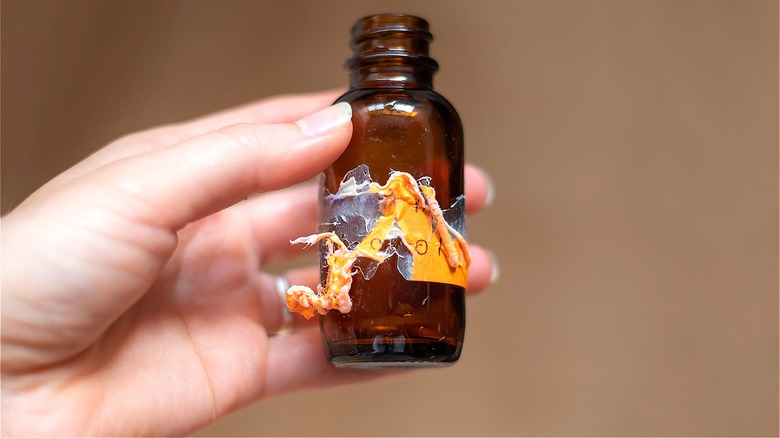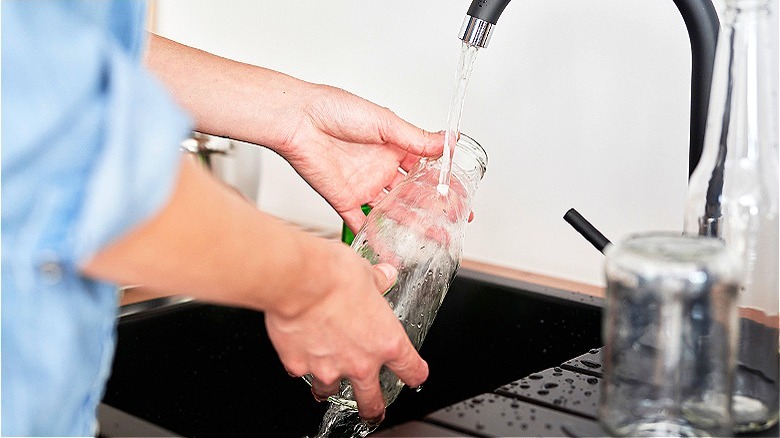The Kitchen Staple You Can Use To Remove Pesky Stickers
Before you can turn your old prescription medication bottles into storage containers for seeds or upcycle used candle jars into dessert dishes, first you need to remove the stubborn stickers embellishing their surfaces. What a pain. And they're not just stuck on plastic, metal, or glass containers; those resinous labels are affixed to thousands of household items, from picture frames and mirrors to electronics and toys. Think about how many fingernails you've cracked trying to scrape off a price tag melded to a mop handle. Not anymore. Forget about using your nails, a knife, or a razor to remove pesky stickers. Instead, it's time to raid your pantry for a can of Crisco.
The classic vegetable shortening is a staple in kitchens the world over, used primarily in recipes for cookies, pie crusts, and shortcakes. However, its secret superpower reaches well beyond the world of decadent desserts and into the realm of repurposing. Like many generic shortenings, Crisco contains soybean and palm oil, which help eat away at glue-like residue on items many frugal homeowners habitually recycle.
Granted, rubbing alcohol, vodka, lighter fluid, and nail polish remover are also capable of erasing clingy label remnants, but Crisco is far less volatile and flammable. Moreover, the environmentally friendly shortening is also affordable and has a shelf life of two years. And, as an added bonus, because Crisco's oils are not hostile elements, they won't compromise a vessel's surface. Consequently, you can add a new sticker on a repurposed container without issue.
The Crisco approach to sticker removal
The Crisco technique works with stickers you've already tried to remove and failed — leaving behind tiny bits of glue on the surface of your item — as well as whole labels you've never attempted to take off. In either case, start by spreading an even layer of Crisco on the affected area and allowing it to sit for at least 10 minutes. Next, use a sponge to gently scrub at the sticky spot. The gummy residue should easily lift off. Once it does, clean the item with soap and water, and let it dry completely before using it for its new purpose.
Labels adhered to glass surfaces are often challenging to remove in one piece. To prevent multiple rips and the annoying aftermath, consider exercising a one-two punch. First, boil a kettle of water. While it's heating up, pour warm tap water into your sticker-covered glass container so it doesn't crack when the boiling water is added. Next, pour out the warm water and carefully fill the container with the boiling water. The heat will begin loosening the adhesive. Follow up by liberally coating the stickers with Crisco.
The amount of time you allow the kitchen staple to sit depends on the stubbornness of the sticker. For particularly tough stickers, apply a thick layer of Crisco and let the oils seep into the label's glue for 12 to 24 hours. Finish by using a damp cloth to clean away the adhesive and any excess shortening.

